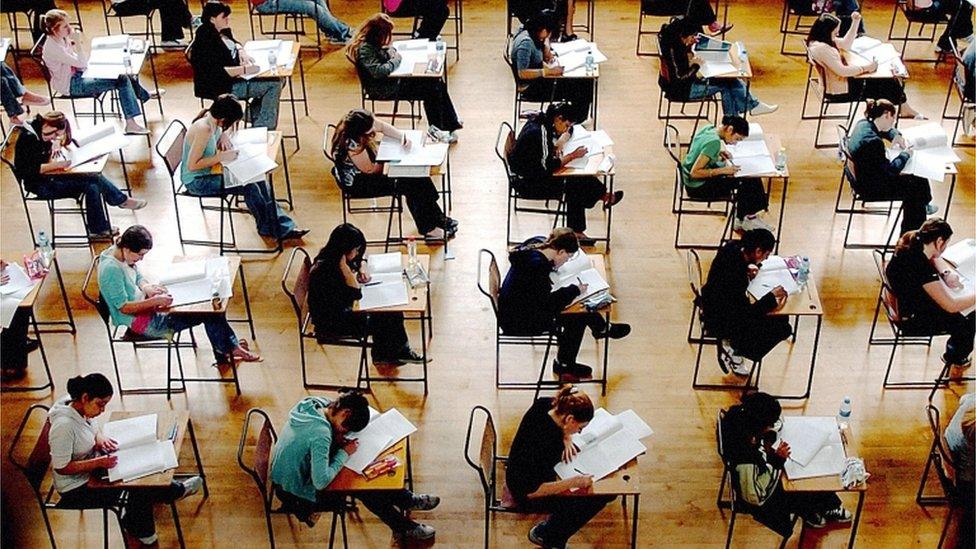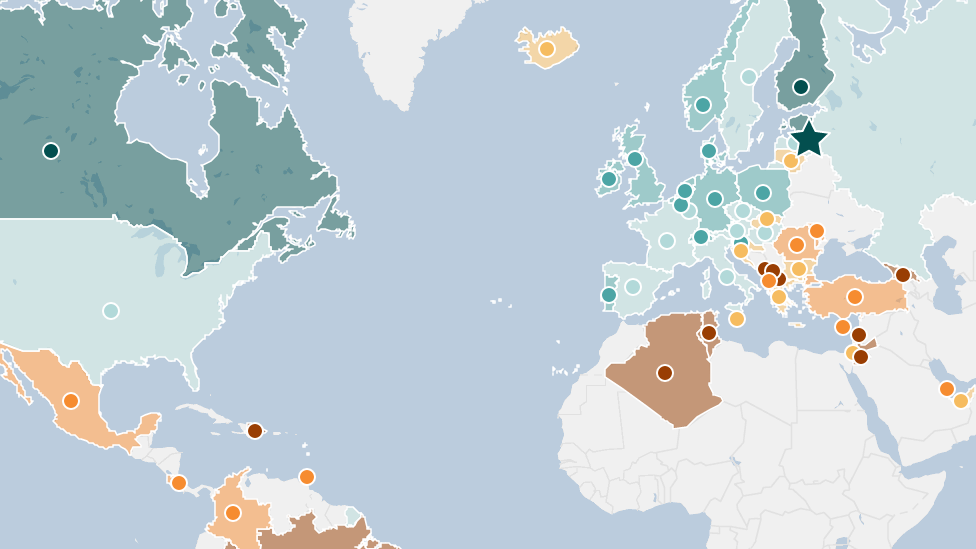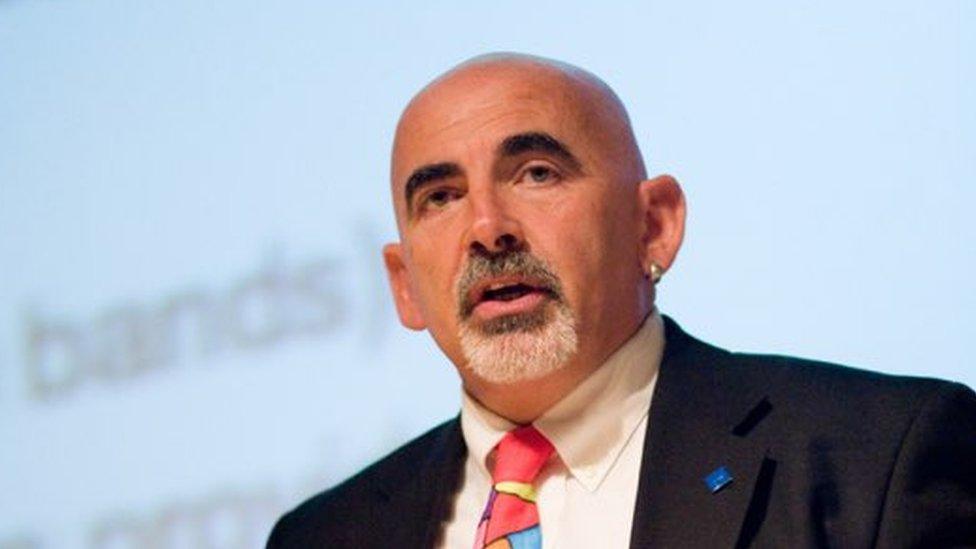Pisa tests: Northern Ireland teens 'slightly better than global average'
- Published

The UK's test results remain behind the top-performing Asian education systems
Fifteen year olds in Northern Ireland have performed slightly better than the global average in international tests in maths, reading and science.
The results were recorded in Pisa tests run by the Organisation for Economic Co-operation and Development (OECD).
There is little change since previous results were published in 2013.
Singapore is ranked the top education system in the tests, which were taken in 2015 by around 540,000 students in 72 countries and regions.
Within the UK, students from Northern Ireland slightly outperformed their counterparts in Scotland and Wales, but were a little behind those in England in all three areas.
Overall, the results suggest that the UK is still lagging behind leading countries at education and has made little progress in international rankings since results three years ago.
However, Northern Ireland had relatively few high achieving pupils, with only 7% of pupils in science and maths, and 6% in reading regarded as "top performers" in the tests.
The Pisa tests - the Programme for International Student Assessment - have become the most influential rankings in international education.
They are run every three years by the OECD and measure education standards in Europe, North and South America, Australasia and parts of the Middle East and Asia. Pisa aims to compare international education systems and their outcomes.
However, some critics have argued that Pisa tests tell us little about the quality of education in different countries
As a whole, the UK remains among the average, middle-ranking countries, in 27th place for maths and 22rd for reading, broadly similar to three years ago.

Robbie Meredith, BBC News NI Education Correspondent
High performance at primary school - particularly in maths - tails off at post-primary school. That seems to be the message for Northern Ireland from the two big international education studies published over the past week.
However, due to the nature of the studies themselves, drawing blunt conclusions is not straightforward.
The Trends in International Mathematics and Science Study (TIMSS) said our primary school pupils were the best at maths in Europe.
The Pisa study suggests our 15 year olds are average - on average - when it comes to global tests in maths, science and reading.
Both studies are based on common tests taken by a significant sample of pupils in Northern Ireland and in other countries, but there are differences between the nature of the tests and what they examine.
The studies are both huge and complex, with the Pisa report alone running to almost 1,000 pages.
Also, some countries participate in both, but the two studies also get results from differing countries.
Pisa, especially, is very powerful, with some governments setting their education policy according to its findings.
But some experts are critical, arguing that the test results obscure longer-term reasons for educational achievement and change.

However, the UK has risen in science from 21st place to 15th place.
The Republic of Ireland has improved steadily over the past two surveys and now ranks fifth in the world in reading. Pupils there also outperform those in Northern Ireland in maths and science.
In mathematics, the performance of pupils in Northern Ireland has risen since the last round of results were published in 2013. Northern Ireland pupils achieved an average score of 493 in Maths, up from 487 and slightly above the OECD average of 490; Pupils in Singapore scored 564.
Although boys slightly outperformed girls, the gender gap was "insignificant."
However, almost one in five Northern Irish students were deemed "low achievers" who could not use "complex reasoning to solve the kinds of problems that are routinely faced by adults in their daily lives," according to the OECD.
Northern Ireland's performance in reading was down one point on 2013 at 497, slightly higher than the OECD average of 493.
As with the rest of the UK, girls significantly outperformed boys in reading.
In science, Northern Ireland's performance fell slightly, even as the UK ranking in the subject rose. Northern Ireland pupils achieved an average score of 500, which is lower than 507 in 2013 but above the OECD average of 493. There was no statistically significant difference between boys and girls.
However, a third of pupils surveyed in Northern Ireland said they expected to work in a science-related occupation in the future, more than any other country in the UK.
Northern Ireland also had "particularly high" truancy rates, with more than a third of pupils reporting that they had "skipped a day of school or more in the two weeks prior to the Pisa test," compared to one in five across all countries.
Among the other findings in Pisa were that socio-economic background has a significant effect on pupil attainment.
- Published6 December 2016

- Published30 November 2016
- Published5 December 2016
- Published4 December 2016
